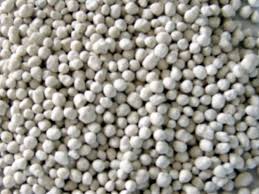
Dec . 05, 2024 16:55 Back to list
Current Trends in Urea Nitrogen Fertilizer Price Fluctuations and Market Analysis
The Dynamics of Urea Nitrogen Fertilizer Prices An In-Depth Analysis
Urea nitrogen fertilizer is a critical input in the agricultural sector, serving as a primary nutrient source for crops. With the global population on a steady rise, the demand for food continues to grow, leading to increased usage of fertilizers. However, the prices of urea nitrogen fertilizers have been subject to significant fluctuations due to a multitude of factors, which merits a closer examination.
Current Trends in Urea Fertilizer Prices
Over the past few years, urea fertilizer prices have experienced wide-ranging volatility. From 2020 to 2021, there was an observable unprecedented surge in prices, attributed largely to the disruptions caused by the COVID-19 pandemic. These disruptions impacted supply chains and production capabilities, leading to shortages in some regions. By early 2022, prices hit record highs as demand surged post-pandemic, combined with rising energy costs, notably natural gas, which is a vital input in the production of urea.
As of late 2023, prices for urea nitrogen fertilizers have shown signs of stabilization, yet remain higher than pre-pandemic levels. The International Fertilizer Association (IFA) has reported that while prices might have cooled slightly, they still reflect the underlying factors that influence global markets, including geopolitical tensions, climate change, and shifting agricultural practices.
Factors Influencing Price Fluctuations
Several key factors contribute to the fluctuations in urea nitrogen fertilizer prices
1. Global Supply and Demand The fundamental economic principle of supply and demand heavily influences prices. Regions with high agricultural output, such as North America and Asia, typically drive demand for fertilizers. Any disruption in supply due to natural disasters, trade restrictions, or production halts can lead to price spikes.
2. Natural Gas Prices Urea is synthesized from ammonia, which is produced from natural gas. Thus, fluctuations in natural gas prices directly impact urea production costs. As energy prices have risen globally, many fertilizer producers have had to increase their prices accordingly.
urea nitrogen fertilizer prices

3. Geopolitical Factors Events such as the Russia-Ukraine conflict have significantly impacted global fertilizer markets. Both countries are major players in the international fertilizer trade. Sanctions and disruptions from ongoing conflicts can lead to reduced exports, causing further supply constraints and price hikes.
4. Environmental Regulations Increasing environmental concerns have led to tighter regulations on fertilizer production and usage. For instance, initiatives aimed at reducing nitrogen runoff and greenhouse gas emissions can lead to increased production costs, which are often passed onto consumers through higher prices.
5. Technological Advances On the positive side, ongoing research and development in fertilizer production technologies offer potential for cost reductions. Innovations in efficiency and alternative production methods may help stabilize prices over time, but the pace of these advancements will vary across different regions.
Impacts on Agriculture
The rising prices of urea nitrogen fertilizers have profound implications for farmers and the agricultural sector. Higher input costs can significantly affect farm profitability, particularly for smallholder farmers who operate on tight margins. As a consequence, many farmers may reduce their usage of fertilizers, potentially leading to lower crop yields and food production.
In response to escalating costs, some farmers are exploring more sustainable practices, including the use of organic fertilizers or adopting integrated nutrient management strategies. These methods may not only mitigate dependence on synthetic fertilizers but also contribute to long-term soil health and sustainability.
Looking Ahead
As we move forward, the market for urea nitrogen fertilizers will likely remain dynamic. Stakeholders within the agricultural sector must remain adaptable to changing conditions, including price fluctuations and policy shifts. Farmers, policymakers, and fertilizer producers must work collaboratively to devise strategies that ensure food security while addressing the environmental implications of fertilizer use.
In conclusion, understanding the factors that influence urea nitrogen fertilizer prices is essential for navigating the complexities of modern agriculture. As the world seeks to feed an ever-growing population amidst environmental concerns, the role of fertilizers and their associated costs will undoubtedly continue to be a critical area of focus for all involved in the agricultural supply chain.
-
Premium Amino Acid Fertilizer | Rapid Plant Growth Booster
NewsJul.31,2025
-
10 10 10 Fertilizer Organic—Balanced NPK for All Plants
NewsJul.30,2025
-
Premium 10 10 10 Fertilizer Organic for Balanced Plant Growth
NewsJul.29,2025
-
Premium 10 10 10 Fertilizer Organic for Balanced Plant Growth
NewsJul.29,2025
-
Premium 10 10 10 Fertilizer Organic for Balanced Plant Growth
NewsJul.29,2025
-
50 Pound Bags of 13-13-13 Fertilizer for All Plants – Bulk & Organic Options
NewsJul.28,2025
